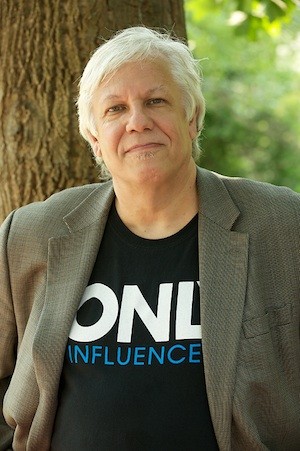In the days leading up to this year’s Email Innovations Summit, in London, I’ve taken the opportunity to reflect on my own email career, and what’s led me to be innovative along the way. When I began my career in email, in 2011, the resources available to help me were few and...
Email has undergone a lot of changes over the last few years - but it’s likely that the changes we’ve already weathered have simply been laying the foundations for what’s to come. For email marketing, these are interesting times. The most important people in any consideration about the future are, of...
Last week, Rising Media, the company I partner with to produce the Email Innovations Summit, acquired Only Influencers, the Email Marketing Community I created in 2010. I will be transitioning the company over the next 6 months and then retiring for good from this industry that has been so good to...
Have you previously considered moving between the agency-side to the brand-side? Or vice-versa? Having made the switch a few times myself (most recently back to agency), I wanted to share two of the biggest thoughts I have when considering both. If you are having similar thoughts, hopefully these help provide a...
Jenna Tiffany: I’m excited to hear everyone’s thoughts on this week’s discussion topic: Is it time to shift our focus from email open rates? Interested to hear everyone’s experience and the challenge in moving away from relying heavily on email open rates when defining email marketing success. If you missed my...
Current Best Practice When it comes to your inactive subscribers, best practitioners have always advocated that you stop mailing them. Following this advice will have the immediate effect of improving your open rates without you having to do anything difficult like write better subject lines or improve your content and/or creative....
Way back in 2004 when eDataSource first launched, it was conceived of as a competitive email tracking tool, the first of its kind. But they quickly discovered that clients really had no insight or intelligence into their own email campaigns, let alone their competitors. There was certainly no 3rd party monitoring...
Last month's opportunity to deliver the opening keynote address at the fourth annual Email Innovation Summit helped me bring together many of the principles that have guided me in my own marketing journey. What I've learned is that it's not enough just to focus on innovation. We also must help marketers...
Ask ten different marketers to define personalization, and you’ll likely get ten different answers. Personalization in marketing has become a catch-all term—a grab bag of endless tactics that includes name merge tags, behavioral targeting, email triggers, content recommendations and so on. Traditionally, these tactics have also been pigeonholed into different industries...
Performance analysis is an absolutely vital aspect of any strategy. I may even go so far as to say that it’s the most important aspect. It’s what keeps you attuned to the pulse of your market, tells you what’s going down well and what’s less appealing. It’s how you weed out...
Jenna Tiffany: It's a pleasure to host another OI discussion with a topic that I’m sure all of you will have thoughts on as well as experiences to share. Artificial Intelligence in email marketing So let's start with, have you used AI in your email marketing activities? What did you learn...
I’ve recently been working on two interesting projects which have put me either side of the brand and vendor perspective. Having worked agency, vendor and client side it’s a very useful juxtaposition from which to develop my own consultancy delivery experience. Project 1. I’ve been working with a marketing platform solution...
Over the last few years, the email industry has been increasingly focused on accessibility. That’s a good thing, especially considering that such a large percentage of the world’s population suffers from some sort of disability, whether it’s permanent or temporary. For example, the World Health Organization counts around 1.3 billion people...
2017 was probably AI’s breakout year in email marketing. It's from then on that I started to witness the results that AI can bring to the channel primarily when used in combination with Machine Learning and Automation. Change has been rapid and ongoing since then, and it doesn’t look like slowing...
How well does your email marketing program align with your customer’s lifecycle? Put another way, are you practicing lifecycle marketing? This is one of the first things I investigate when I’m working with a new client, because often the answer provides the basis for recommendations to boost performance (which is the...
The Nielsen Norman defines User Experience (UX) as “encompassing all aspects of the end-user's interaction with the company, its services, and its products”. They sum it up with this kernel of wisdom: “the first requirement for an exemplary user experience is to meet the exact needs of the customer, without fuss...
(The following is a recent discussion on the Only Influencers discussion list led by Kate Barrett. Join Only Influencers to be part of the discussion) Kate Barrett Hi everyone! I have the absolute pleasure of leading the discussion this week and I’m so excited to see what we all come up...
Living in the world of open rates, click rates and funnel driven conversion stats? I get it, we have to report on performance, but when do you get to do the really cool things in marketing? What happened to discovery and exploration? Why are we still looking at bar charts and...
As the world of digital advertising and marketing has planted its stake firmly in the ground in support of “NATIVE” (Sponsored) Advertising, the consumers have made it clear that they support the move. The line between online content written by journalists and story-like ads that are paid for by specific corporations...
Much has changed in the world of email marketing in the last 15 years. Volumes are up, revenues are up, CPMs are down-and those are just a few of the big changes in the industry. But one of the biggest changes is in the nature of the vendor/client relationships themselves. Specifically,...

 How to resolve AdBlock issue?
How to resolve AdBlock issue? 














